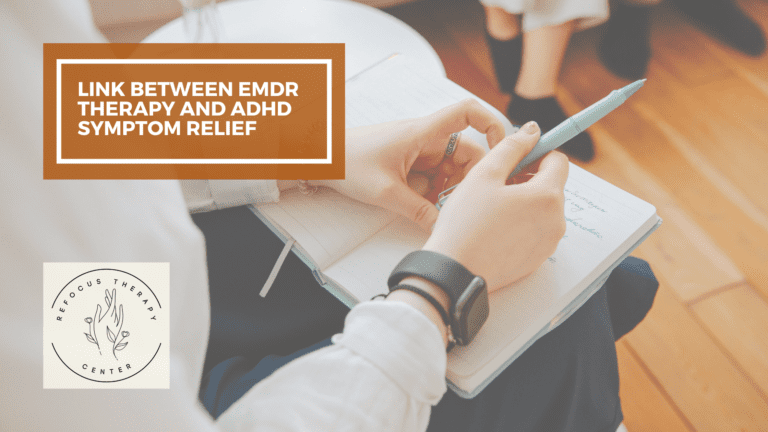Finding effective workplace strategies for ADHD and navigating the demands of a professional environment can sometimes feel, well, overwhelming. Struggles with task initiation, prioritization, and distraction management are common challenges.
Here are some explore tangible tips for managing attention and organization in the workplace, however individual therapy or ADHD coaching could be just what you need- to help identify the problem, and a plan to move forward.
1. Structuring your Day:
-
- Prioritize Tasks: Identify and rank tasks based on urgency and importance, creating a daily action plan.
-
- Time Blocks: Use a technique called time-blocking where you allocate specific chunks of your day for particular tasks. This helps you allocate focus and reduces the overwhelming feeling of multitasking. For example, maybe at 9am, you check your inbox (and delete messaged you don’t need so you don’t end up with 849 unread emails).
- Consistent Routines: Aim for consistent start and end times for tasks. This helps train your brain to anticipate and prepare for work, breaks, and other activities.
2. Pomodoro for Time Management: Harnessing Focus and Productivity
-
- Strategic Work Sessions: Utilize the Pomodoro Technique by working in short, focused bursts with scheduled breaks.
- Optimizing Attention: Align complex or attention-demanding tasks with your peak focus periods during the day.
3. Declutter to Destress: Organizing Physical and Mental Workspaces
-
- Physical Space: Implement a ‘place for everything’ approach to minimize distractions and enhance efficiency.
- Digital Space: Organize digital files and emails into structured folders and utilize tools or plugins to manage and minimize digital distractions.
4. Leverage Technology: Digital Allies in Managing ADHD
-
- Reminder Systems: Try digital tools and apps that facilitate reminders for meetings, deadlines, and breaks.
-
- Digital Planners: Apps like Trello or Todoist can help organize tasks, set reminders, and track your progress.
- Task Management: Explore apps designed for task management, which can provide both overarching views and granular details of projects. One of my preferred tools for task management is Goblin Tools.
5. Advocate for Yourself: Communicate and Collaborate
-
- Transparent Communication: Ensure open lines of communication with supervisors and colleagues about your working style and any accommodations that may be beneficial.
- Seek Feedback: Actively seek feedback, embracing constructive criticism and celebrating accomplishments for continued growth.
6. Find Your Creative Zen: Channeling ADHD’s Creative Spark
-
- Idea Journal: Keep an ‘idea journal’ to jot down spontaneous thoughts and innovations.
- Collaborative Spaces: Engage in collaborative sessions where your dynamic thinking and problem-solving abilities can shine.
7. Seek Support and Continuous Development
-
- Professional Development: Engage in workshops or courses focused on enhancing organizational and attention management skills.
-
- Peer and Supervisory Support: Establish a support network within the workplace to facilitate a conducive and understanding work environment.
- End-of-Day Review: Spend a few minutes at the end of each day to review what went well and what didn’t. Adjust strategies as needed.
Conclusion
Having ADHD doesn’t mean you can’t excel in the workplace. Everyone’s ADHD journey is unique. While certain strategies might work wonders for some, it’s pivotal to find and refine the approaches that resonate with you.
Remember, everyone’s journey with ADHD is unique. What works for one person might not work for another. It’s all about finding the blend of strategies that resonate with you and refine them as you go.
🔗 Learn More About Navigating ADHD
📞 Connect with us through our website or call us directly at 407-449-2294 for personalized strategies, tools, and supportive guidance on your professional ADHD journey, with a licensed therapist.










